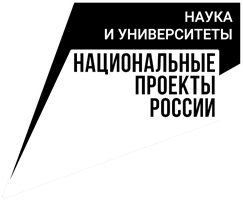47th meeting of the seminar
«Supercomputer simulation of the Earth system»
The seminar is devoted to various aspects of the application of supercomputer modeling methods for solving weather and climate forecasting problems.
Seminar Leader:
- Sadovnichy V.A., academician, rector of Lomonosov Moscow State University
Co-leaders of the seminar:
- Wilfand R.M., Doctor of Technical Sciences, Scientific Director of the Hydrometeorological Center of Russia
- Dobrolyubov S.A., Corr. RAS, Dean of the Faculty of Geography, Lomonosov Moscow State University
- Yakovlev N.G., Doctor of Physics and Mathematics, Leading Researcher, Institute of Numerical Mathematics, RAS
- Stepanenko V.M., Doctor of Physics and Mathematics, Deputy Director of RCC MSU
Scientific Secretary of the seminar:
- Varentsov M.I., Ph.D., senior researcher of RCC MSU
Seminar topics cover the following main areas (but not limited to them):
- Methods and technologies for using supercomputer computing in interdisciplinary problems of environmental sciences.
- Mathematical modeling of processes in the climate system.
- Application of supercomputer technologies to solve problems of weather forecasting.
- Application of supercomputer technologies to solve problems of assessing climate change and their consequences for the environment.
- Application of supercomputer technologies for the complex solution of problems of environmental protection, including natural hazards and man-made disasters.
PROGRAM
17:30 (GMT+3)
| Prof. Colin Price | The Porter School of the Environment and Earth Sciences, The Porter School of the Environment and Earth Sciences, Tel Aviv University, Israel |
CHALLENGES IN MODELING LIGHTNING IN WEATHER AND CLIMATE MODELS
Lightning is a process that develops on very small spatial and time scales (micrometers and microseconds). Hence, it is very difficult to model these processes in models that have coarse spatial and time resolution. To overcome these problems, we need to look for proxies that can be empirically related to the development and observation of lightning discharges. In weather forecast models we can use cloud microphysical parameters to estimate the probability of lightning discharges at a particular time. However, in global climate models such microphysical parameters are not available, and hence other proxies need to be used to estimate spatial and temporal variations of global lightning. Obviously all these estimates have large uncertainties, but still allow us to estimate changes in lightning activity under different climatic conditions.
The meeting of the seminar will be held in the form of a webinar on the Zoom platform.
Link to the conference:
https://us02web.zoom.us/j/86727336944?pwd=IlFt4ENL5r_N2O70p5FnDiyzfMFU8j.1
Meeting ID: 867 2733 6944
Passcode: 635955
To simplify our work during the seminar, please do the following: check in advance that Zoom works for you (in the Zoom application settings you can check the quality of the speakers and microphone) and enter your last name, first name in your profile settings and middle name in full (this can be done on your profile page (https://us02web.zoom.us/profile) - in this case, conference colleagues will see how to contact you.

